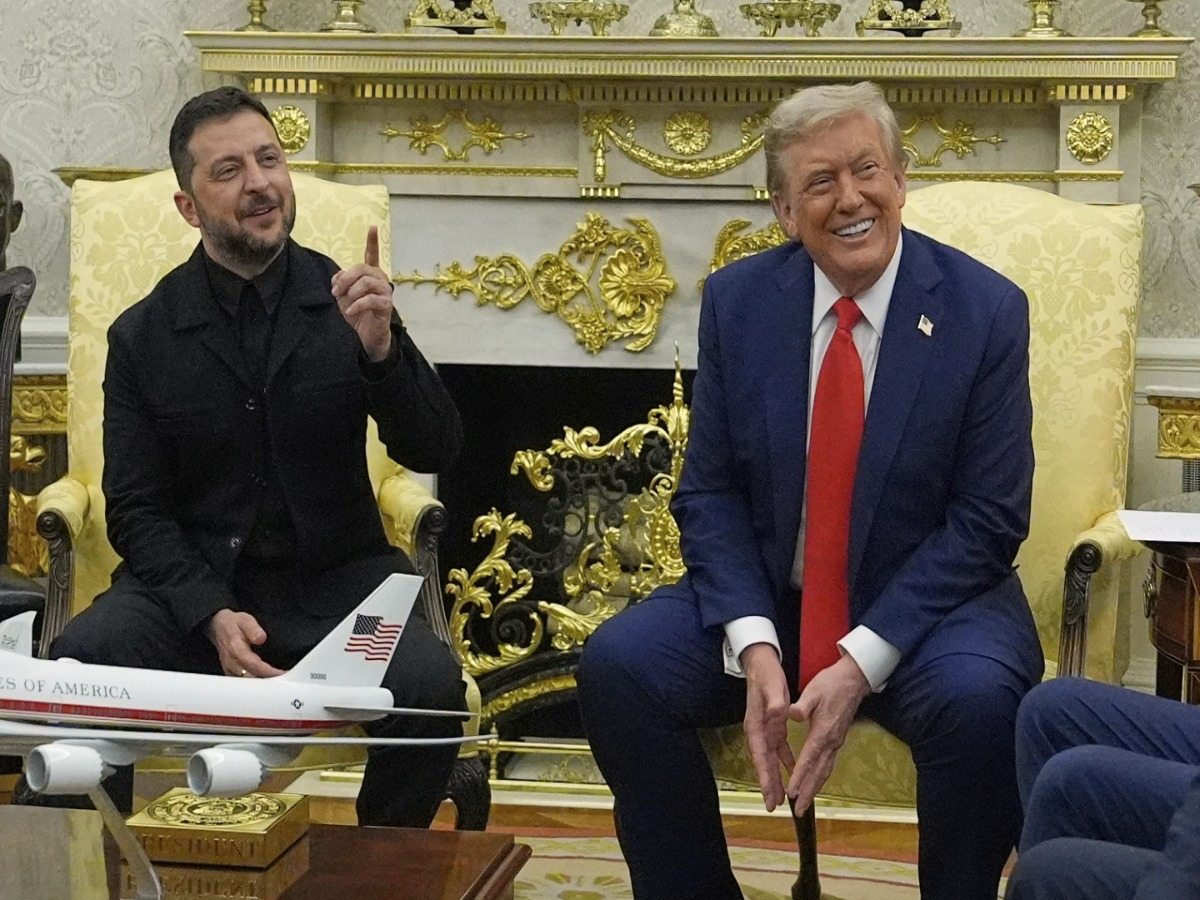President Donald Trump is set to host Ukrainian President Volodymyr Zelenskyy at the White House on Friday. The meeting is expected to center on Ukraine’s urgent request for advanced U.S. weapons to help repel Russia’s unrelenting assaults.
The visit comes just a day after Trump’s phone call with Russian President Vladimir Putin, during which the two leaders reportedly discussed trade and the ongoing conflict, according to the White House.
Zelenskyy’s top priority heading into the talks is to strengthen Ukraine’s air and missile defense systems in the face of Russia’s continuing attacks on cities, energy infrastructure, and hospitals. At the heart of his request is the American-made Tomahawk missile, a high-precision, long-range cruise weapon capable of striking deep inside Russian territory, even reaching targets beyond Moscow.
READ ALSO: Trump says Tomahawk missiles could be sent if Russia refuses to end the Ukraine war
Military analysts say such a weapon could dramatically expand Ukraine’s ability to hit strategic targets, including Russia’s oil facilities that finance its war efforts. But experts caution against expecting any single weapon to turn the tide.
“No one weapon system is going to be a wonder weapon or a game changer, per se,” said John Hardie, deputy director of the Foundation for Defense of Democracies’ (FDD) Russia Program, in an interview with Fox News.
Hardie explained that defeating Russia’s campaign requires a comprehensive strategy, combining improved missile capability for Ukraine, stronger sanctions to weaken Russia’s economy, and more targeted strikes on its defense and energy sectors.
“Putin still seems to believe, or chooses to believe, that he can grind down Ukrainian forces in this war of attrition, and that eventually that will give him a pathway to accomplishing some of his goals,” Hardie said. “He’s going to have to be disabused of that. The goal should be to exhaust the Russian military’s offensive potential.”
While Tomahawks could provide Ukraine with a strategic advantage, Hardie noted that other systems might offer greater efficiency for day-to-day battlefield needs. “We kind of fixate on that one system, but there are a broad range of things that the United States can do to enhance Ukrainian long-range precision strike capabilities,” he said.
READ ALSO: Putin asserts U.S. under Trump is receptive to Russia’s Ukraine position
Among the alternatives is the Extended-Range Attack Munition (ERAM) missile, a more cost-effective, long-range weapon designed specifically by the U.S. for Ukraine, expected to begin arriving this month. Hardie also highlighted the continued importance of defensive systems like the Patriot batteries, which have been critical in countering Russia’s frequent drone and missile attacks.
Trump, following his call with Putin, described the conversation as having achieved “great progress” but offered no details. He confirmed that he and the Russian leader agreed to meet again soon, likely in Hungary.
While Trump said the discussion focused on U.S.-Russia trade, he did not specify whether American military aid to Ukraine, including the Tomahawk missiles, was addressed. Earlier in the week, Trump had hinted to reporters that he “might have to speak” with Putin about U.S. missiles near Russian borders, a remark widely interpreted as a warning.
However, Russian officials later confirmed that the issue of Tomahawks did arise in the conversation.
“Vladimir Putin reiterated his thesis that Tomahawks won’t change the situation on the battlefield, but they will cause significant damage to relations between our countries. Not to mention the prospects for a peaceful settlement,” said Russian presidential aide Yuri Ushakov, according to Reuters.
READ ALSO: Rubio praises Trump as ‘only leader in the world’ capable of brokering Ukraine peace deal










